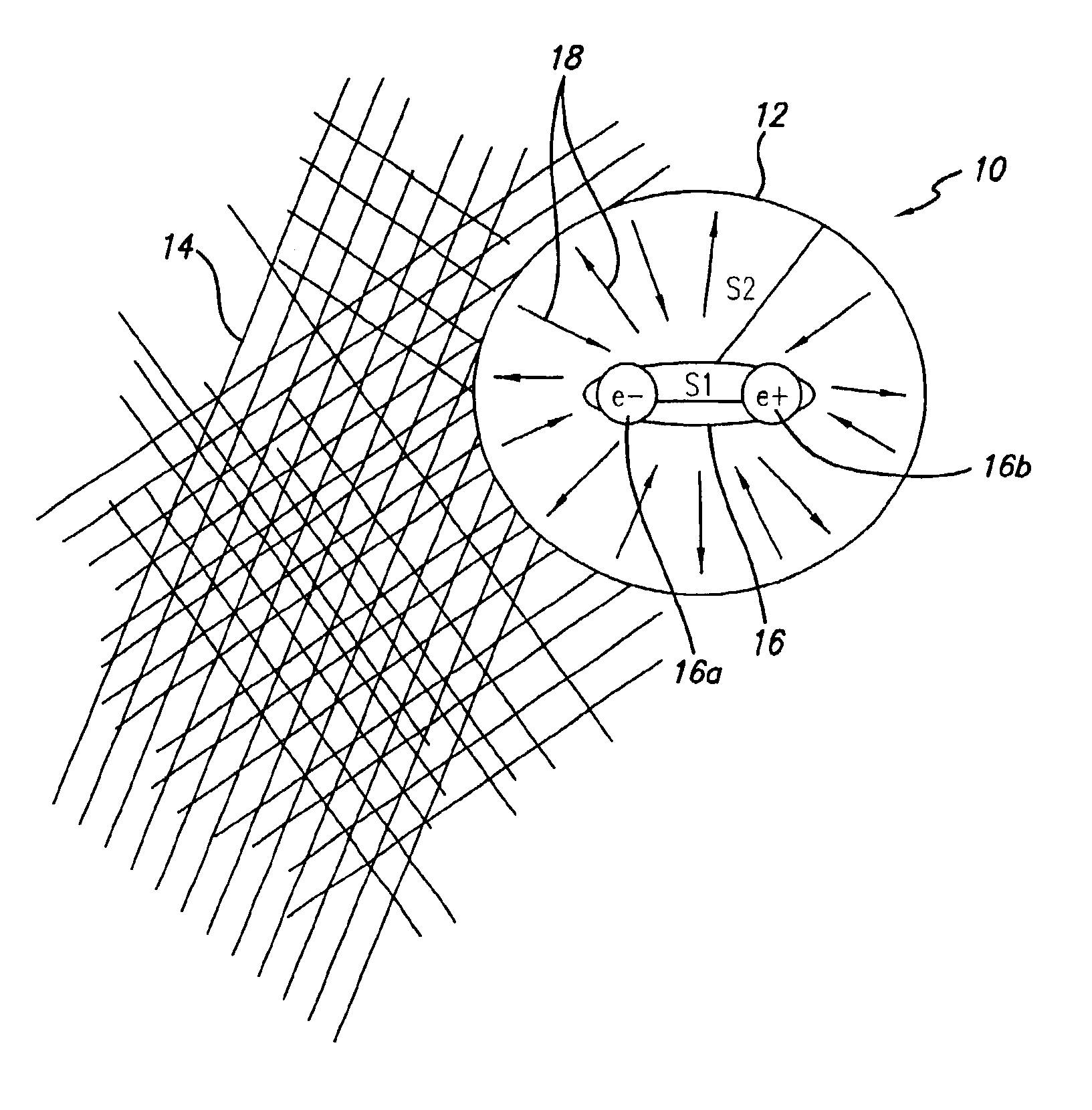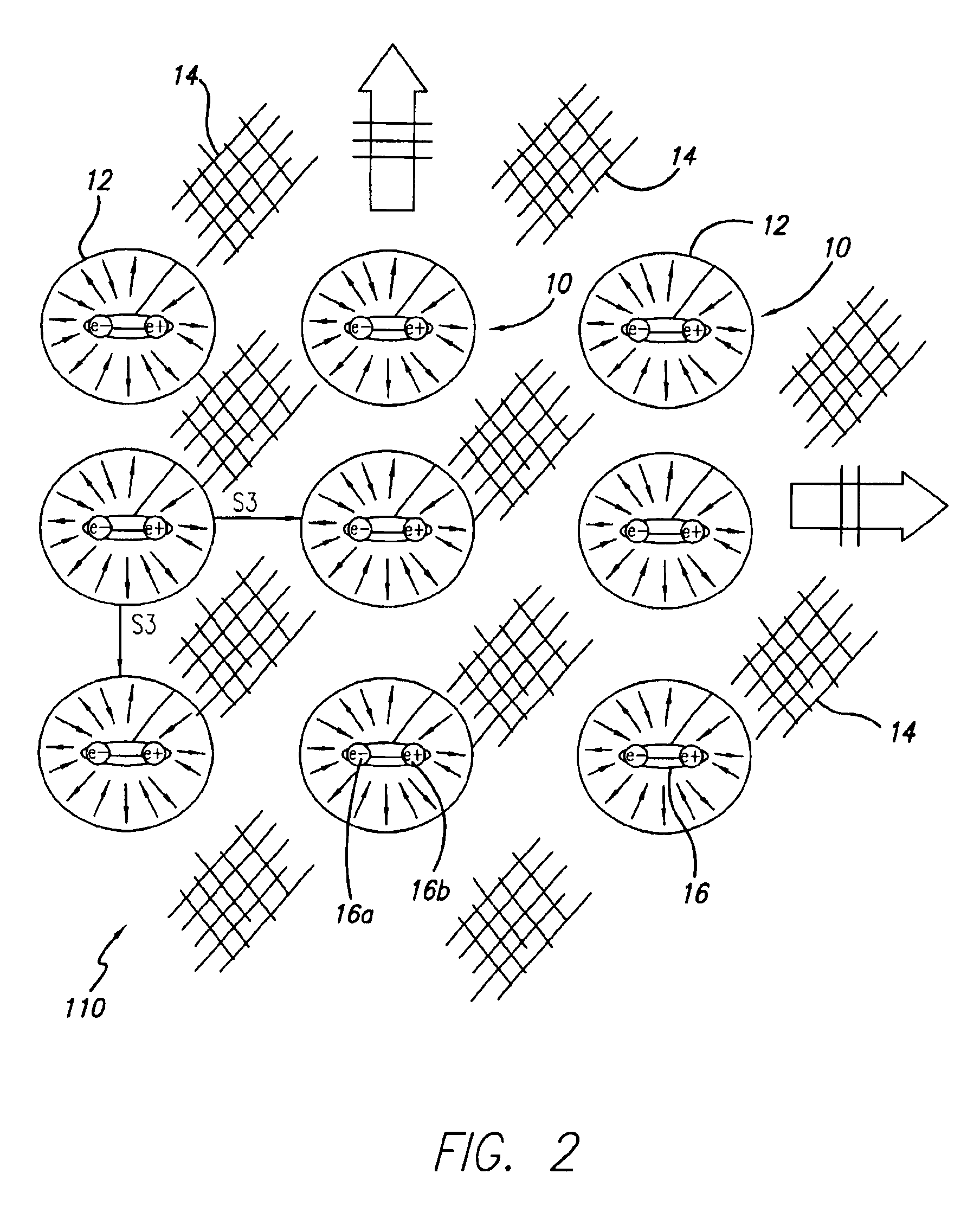High density storage of excited positronium using photonic bandgap traps
a technology of photonic bandgap traps and excited positronium, which is applied in the field of high density storage of excited positronium using photonic bandgap traps, can solve the problems of difficult implementation of neutral atom traps, difficult to achieve the effect of ordinary matter devices, and intrinsic instability of positronium
- Summary
- Abstract
- Description
- Claims
- Application Information
AI Technical Summary
Benefits of technology
Problems solved by technology
Method used
Image
Examples
Embodiment Construction
In accordance with the present invention, a mechanism is provided for trapping and storing relatively large quantities of excited electrically neutral positronium (Ps*) in a mobile device, along with a means for either allowing the Ps* to self-annihilate and release the stored energy, or for ionizing the Ps* and producing a directed positron beam. Further, a mechanism is provided for introducing positronium into the trap and achieving the appropriate excited state. Relatively high storage densities are achieved by using the Bose-Einstein Condensate (BEC) form of Ps*.
The approach of the present invention is based on a highly innovative trap for antimatter or exotic matter (mixture of antimatter and normal matter, e.g. positronium). The trap is constructed of photonic bandgap (PBG) structures containing at least one cavity, or an array of cavities. Recent theoretical and experimental work shows that it is possible to maintain atoms in an excited state by trapping them in cavities insi...
PUM
 Login to View More
Login to View More Abstract
Description
Claims
Application Information
 Login to View More
Login to View More - R&D
- Intellectual Property
- Life Sciences
- Materials
- Tech Scout
- Unparalleled Data Quality
- Higher Quality Content
- 60% Fewer Hallucinations
Browse by: Latest US Patents, China's latest patents, Technical Efficacy Thesaurus, Application Domain, Technology Topic, Popular Technical Reports.
© 2025 PatSnap. All rights reserved.Legal|Privacy policy|Modern Slavery Act Transparency Statement|Sitemap|About US| Contact US: help@patsnap.com



